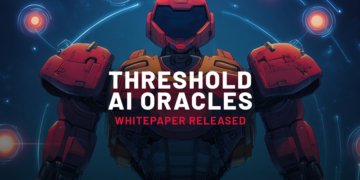
NFTs Evolving Not Extinct: Insights from Hashing It Out Podcast
In the ever-evolving digital landscape, Non-Fungible Tokens (NFTs) have emerged as one of the most talked-about innovations in recent years. Yet, as with any groundbreaking technology, NFTs face skepticism and critiques questioning their viability and longevity. Are NFTs truly on the decline, or are they merely undergoing a transformation? In a recent episode of the “Hashing It Out” podcast, Jana Bertram from the Rari Foundation provided illuminating insights into the dynamic nature of this burgeoning market. Let’s delve into why NFTs are far from dead and how they are evolving.
Understanding the NFT Landscape
Non-Fungible Tokens emerged as a revolutionary way to own digital assets, offering a new dimension to art, music, and collectibles. Unlike traditional assets, NFTs are unique and cannot be exchanged on a like-for-like basis. This uniqueness underpins their value, enabling artists and creators to monetize their work in innovative ways.
The Rise of NFTs
During the past few years, we have witnessed an unprecedented surge in the popularity of NFTs, fueled by:
- Celebrity endorsements
- Record-breaking sales
- Increased media coverage
- A growing interest in digital ownership
These factors have collectively positioned NFTs at the forefront of digital culture, captivating both tech-savvy individuals and traditional artists alike.
The Present Challenges
Despite their rapid rise, NFTs have faced criticism and challenges that have called their sustainability into question, including:
- Environmental concerns about blockchain energy consumption
- Market saturation with redundant or low-value items
- Speculative bubbles that inflate and burst
- Legal and regulatory uncertainties surrounding intellectual property rights
These challenges have led some skeptics to prematurely proclaim the death of the NFT phenomenon.
Jana Bertram’s Perspective on NFT Evolution
To gain a more nuanced understanding of the current NFT landscape, the “Hashing It Out” podcast turned to Jana Bertram, a thought leader from the Rari Foundation. Her insights offer a compelling counter-narrative to the idea of NFTs’ demise.
Revolution Over Extinction
Bertram argues that NFTs are not dying but evolving, transitioning from their initial phase of hype to a more mature and sustainable model. Key points from her discussion include:
- Integration with gaming and digital experiences: NFTs are being integrated into metaverses and online games, providing users with interactive and immersive experiences.
- Decentralized finance (DeFi) applications: NFTs are finding new utility in the DeFi space, enabling innovative financial products and services.
- Environmental innovation: Developers are increasingly utilizing energy-efficient blockchain networks to mitigate ecological concerns.
- Enhanced legal frameworks: Improved legal structures are being developed to protect intellectual property and ensure compliance with regulatory standards.
The Role of the Creator Economy
Another key aspect of NFT evolution, as highlighted by Bertram, is the role they play in empowering the creator economy. NFTs are enabling a new paradigm where:
- Artists retain control over their work through secure proof of ownership
- Royalties are automated via smart contracts, ensuring creators receive ongoing financial benefits
- Global access is provided to artists and collectors, removing barriers to entry into the art and creative industries
These elements embody the transformative potential of NFTs, extending beyond mere collectibles to becoming vital instruments of economic empowerment and digital innovation.
The Future of NFTs: What Lies Ahead?
Recognizing the potential for continued evolution, stakeholders proactive in the NFT space are driving strategies and innovations that address previous shortcomings, ensuring the technology’s long-term viability.
Broader Use Cases
The future of NFTs appears promising, with broader applications anticipated in fields such as:
- Real estate: Tokenization of physical assets could simplify transactions and improve liquidity
- Brand engagement: Businesses can use NFTs for customer loyalty programs and exclusive offers
- Content distribution: Musicians and writers can use NFTs to directly distribute and monetize their creations
Community and Innovation-Driven Growth
Communities built around NFT platforms continue to advocate for improved usability, enhanced collaborations, and user-friendly interfaces. The emphasis on cross-chain interoperability and collaboration with traditional industries further illustrates NFTs’ potential for enduring relevance and growth.
Ultimately, the evolution of NFTs is a testament to the resilience and adaptive nature of technological innovation. As Bertram and others in the industry suggest, NFTs are transitioning into new phases of development and utility, poised to redefine the digital economy as they mature.
NFTs are not nearing extinction. Instead, they are on the cusp of a transformation that promises to deliver tangible benefits, paving the way for a future where digital ownership is commonplace and accessible to all.
“`


















